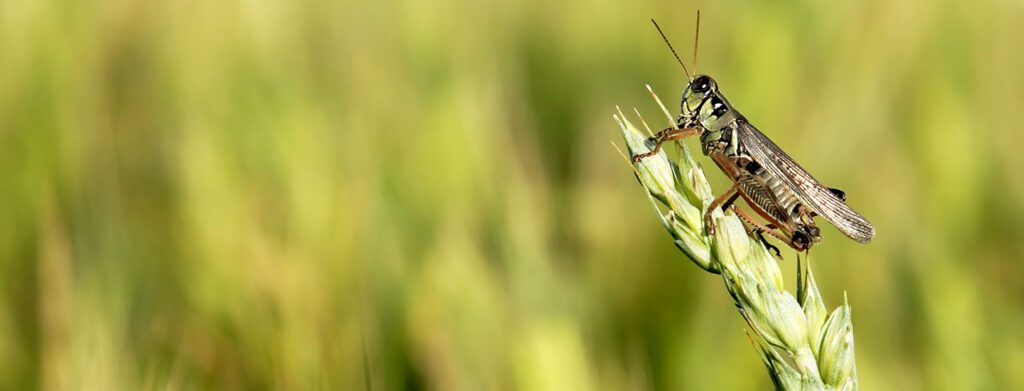Author
Over the last decade there has been a growing interest on a European and international level in how we can utilise insects as an alternative source of protein in food and animal feed.
In 2004, the Food and Agricultural Organisation of the United Nations (the FAO) forecast a substantial increase in the demand for animal protein and produced a paper “Protein Sources for the Animal Feed Industry”. The paper referred to a “Livestock Revolution” driven by a rapidly growing world population; income growth; urbanisation and changes in lifestyles and food preferences.
The FAO paper cited research from the International Food Policy Research Institute which predicted that global demand for meat products would increase by 58% between 1995 and 2020. The global demand for poultry meat was predicted to increase by up to 85%, beef by 80% and pig meat by 45% in the same period. The paper recognised that most of the additional supply of animal products was likely to come from intensive poultry and pig production.
The FAO concluded “What is certain is that there will need to be considerable increases in feed manufacture, requiring a thriving, successful and modern feed industry.”
Twelve years on, it is inconceivable that a successful and modern feed industry would be anything other than a sustainable and environmentally responsible enterprise.
It is surprising, therefore, that the majority of commercial livestock farming operations in Europe are dependent on imports of animal feed which predominantly derive their protein source from soybean grown in South America.
The importation of soybean increased following the ban on meat and bone meal in animal feed in 2001. Meal derived from animal by-products was previously a cost effective source of protein in animal feed. However, it was identified as the most likely means of BSE transmission.
The availability, cost, safety and sustainability of feed protein are all paramount in meeting the growing demand for animal protein. As the demand increases, there is an opportunity to diversify and consider more sustainable sources of protein.
In 2013, the FAO published a further paper, “The Contribution of Insects to Food Security, Livelihoods and the Environment” which considered the contribution insects would make to food security. The paper reported that there were already established companies who were leading the way in large scale use of insects as feed ingredients. It also reported on the benefits of considering insects as a source of protein, including: the high feed conversion rate of insects (for example, crickets can convert 2KG of feed into 1KG of protein compared with cattle that require 8KG of feed to product 1KG of protein); lower greenhouse gas emissions; the ability of insects to feed on a range of organic wastes (such as food waste) and be able to convert waste into high quality protein that could be used in animal feed.
In 2013, the FAO predicted that world feed production would have to increase by 70% to able to feed the world in 2050. The FAO stated that the need to find alternative and sustainable proteins was an issue of major importance that needed a short term viable solution which made insects an increasingly attractive feed option.
Insects are being considered as a sustainable alternative source of protein, along with algae and cultured meat (in vetro meat production). Research has suggested that insect meal is a source of high quality protein that is equivalent to that of fish meal.
One of the reasons that insects are considered to be a viable alternative source of protein is that their production requires comparably less resources than more traditional sources of protein in animal feed. The FAO estimates that 33% of arable land is utilised to produce animal feed for use in current livestock production methods. Insects require comparably less land and water.
Despite the perceived enormous potential to use insect protein in feed, there are two issues which have so far restricted the growth of this emerging industry in Europe. The first is the lack of a regulatory framework for the production of insects as feed and second, the technology required to mechanise production to produce constant, high quantities of insects which is essential to create an economically viable industry.
Research is essential to inform policy making which in turn will provide the confidence required to promote the investment needed for the industry to stand a chance of getting off the ground. The EU and some member states are undertaking research required to establish practices for the production of insects as food and feed.
In October 2015, the European Food Safety Authority (EFSA) produced a scientific opinion at the request of the European Commission “Risk Profile Related to Production and Consumption of Insects as Food and Feed “. The opinion provided an overall review of the risk posed by the use of insects in feed and food from the production chain up to consumption by humans and animals for human consumption.
Importantly, the EFSA Paper identified the potential use of insects in animal feed as a sustainable alternative source of protein. It records that there is research which suggests that fly larvae and meal worms are already being fed to farmed chicken and fish in Africa and that feeding studies suggest that insects can be a component of feed in the same way as soybean meal or fishmeal. The paper also records that some insect protein is equivalent or superior to soybean protein as a source of essential amino acids.
Scientific research is still required to inform policy on the rearing, slaughtering, processing, transportation and application of the feed to ensure that the use of insects is safe and every step is taken to mitigate any potential risks.
Although the reality of insects being a part of everyday human consumption in Europe, in the same way that crustaceans are widely available and a regular part of the western diet, may be considered unlikely, that is not necessarily the case for insects as animal feed. Whilst insects have been identified as a more sustainable source of protein in animal feed, which could be used to combat the food security crisis identified by the FAO, it remains to be seen whether the research institutions, the legislature and the industry as a whole will be able to develop in time to establish insect protein as a viable alternative in animal feed.
For more information please contact Rachel O’Connor, Associate on rachel.o’connor@michelmores.com or 0117 906 9308


